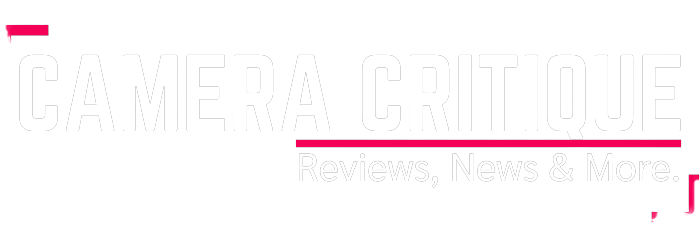In today’s article, we’ll show you the top 5 Drone for wedding photography that can give you professional-looking photographs or video.

This is where new and emerging technologies can provide us with the ability to capture these special moments in a very creative way that our DSLR or mirrorless cameras never provide. But one thing that I have to mention. The only drone photos will not look good on your wedding album. so you have to buy the best wedding camera also.
Drones can be used for capturing wedding shoots in multiple different ways and with creative angles. The high-quality cameras they usually pack can produce stunning images and videos that have outstanding production quality.
So let’s have look at the top 5 drones for wedding photography.
The best drone for wedding photography in India
- DJI Mavic 2 Zoom
- PowerVision PowerEgg X Wizard
- Autel EVO II
- DJI Mavic 2 Pro
- DJI Air 2S
So let’s go dig deep into the section of the world’s best Drone for Wedding Photography.
1. DJI Mavic 2 Zoom
We all know who DJI is. DJI has been producing one of the best and highest quality drones and is a well-known leader in the industry.
So it probably comes as no surprise that they are going to be dominating this list.
The DJI Mavic 2 Zoom Drone is one of their top models that many people may overlook. However, the camera of this drone can deliver one of the most stunning and creative-looking videos you can expect to see.
The camera can capture high-quality and highly detailed 4K videos. But the good things don’t end here.
The Mavic 2 Zoom is capable of taking HDR photos and videos. The additional capabilities of shooting a hyper-lapse, and even creating a dolly zoom effect give a lot of creative freedom that can make any wedding footage outstanding. And the adjustable aperture will provide high-quality videos and photos, even in those low-light moments.
2. PowerVision PowerEgg X Wizard
This PowerVision is certainly an inventive company – as its awards shelf will testament. It has been making underwater drones as long as flying ones. so this drone for wedding photography shouldn’t have come as a surprise, but it did. Their original PowerEgg was a stunning product, yet rather than revising it, PowerVision opted to go back to the drawing board. They created an altogether new egg which could be used as a drone, a hand-held or tripod-mounted camcorder making use of the gimbal for stability. And the A.I. for subject tracking, and – in the optional ‘Wizard’ kit – a beach-ready drone that can land on water or fly in the rain.
Photographers will rightly worry that the 4K camera doesn’t have as bigger a sensor as, for example, the Mavic, but in good light, it’s capable of 60fps – double the frame rate of the DJI, making it great for. Its adaptability means its arms are completely removable but, thanks to the folding props, setup takes no longer than a DJI Phantom. The A.I. camera mode is good, but it would really benefit from a ‘record’ button like a traditional camcorder – you need to use the app.
The waterproof model means attaching a housing and landing gear which does take a minute or two and covers the forward-facing collision & object tracking sensors, but there is nothing on the market that can touch it so it’s hardly something to complain about. This is the drone that GoPro should have made.
3. Autel EVO II
Like the Mavic 2, Autel’s second EVO is offered with different camera choices, in theory at least. Both are built around a heavy, rugged-looking (but average feeling) orange airframe which eschews sleek consumer-friendly design for simple practicality. It’s a bit chunkier than the Mavics, but it can fly for longer and is bigger unfolded).
While Autel Explorer, its partner app, lacks some of the polish of DJI’s equivalents. Tt does bring all the tracking options you might want. Moreover, it has the huge advantage of being optional. There is a 3.3-inch OLED screen in the remote meaning you can fly without connecting the phone at all. Another big plus is that the drone has omnidirectional collision sensors which it uses in a normal fight (the Mavic 2 has side-sensors, but only uses them in some automatic modes). Intended for professional work, the drone also lacks DJI’s big-brother geofencing.
So far the ‘lesser’ 8K model is the one widely available – with the 6K ‘Pro’ model following and the dual infrared-enabled version to come. Why is 8K ‘lesser’? In fact, it uses the same Sony IMX586 half-inch imaging chip as featured in the Mavic Air 2, while the 6K pro sports IMX383 1-inch sensor (that’s four times the area) and can output 10-bit footage and a variable aperture. It’s also worth noting that 8K is limited to 25fps; 6K to 50fps and 4K to 60fps.
So this is the best drone for wedding photography if your concern is video resolution (The Autel EVO II has 8K @ 25fps video resolution)
4. DJI Mavic 2 Pro
2020 saw the arrival of the Mavic Air 2 with a host of improvements to the Mavic line which make the Mavic 2 Pro more of a specialty aircraft than before. But whichever way you look at it the stills and, in lower light, the video remains unbeaten.
Given DJI’s ownership of Hasselblad, the camera branding might be seen as a gimmick. The 20-megapixel stills from the 1-inch sensor are unquestionably far better quality than those from smaller sensors (including the Mavic 2 Zoom). Manual controls allow up to 128,000 ISO to be selected and video can be output in real 10-bit and in HDR, and there is a ƒ/2.8-ƒ/11 aperture
Each pixel on the sensor is still bigger than on all but the EVO II Pro from this list, so low-light stills and video look gorgeous, and the higher detail is also useful for surveyors and 3D mapping, both of which the Mavic handles easily thanks to integration with Drone Deploy (in fairness similar integration is available with other drones). The range of automated flight modes in the DJI drones, like ‘Hyperlapse’ (timelapse), are all well implemented and easy to learn, making the Mavics very effective creative tools when operated alone.
5. DJI Air 2S
Non-camera devices with cameras on them, such as drones, tend to be held back by having annoyingly small sensors. So props are due to DJI for sticking a 1-inch sensor in the DJI Air 2S. The best drone for wedding photography is Providing a significant upgrade in image quality and dynamic range compared to a lot of other drones on the market.
It’s not the only drone so equipped. The DJI Mavic Pro 2 has a 1-inch sensor. But it is much more compact than that drone, or any other drone with a 1-inch sensor. The DJI Intelligence systems are also coming on apace, with Active Track and avoidance sensors giving the drone more nuanced control than ever over its own trajectory. It’s a huge achievement how much fits into this drone’s slim, redesigned chassis.
Conclusion
There you have it: top 5 Drones for wedding photography
Now I’d like to hear from you:
Is there any drones here that I missed?
Or maybe you have a question about one of the drones I recommend.
Either way, leave a quick comment below right now.








1 comment